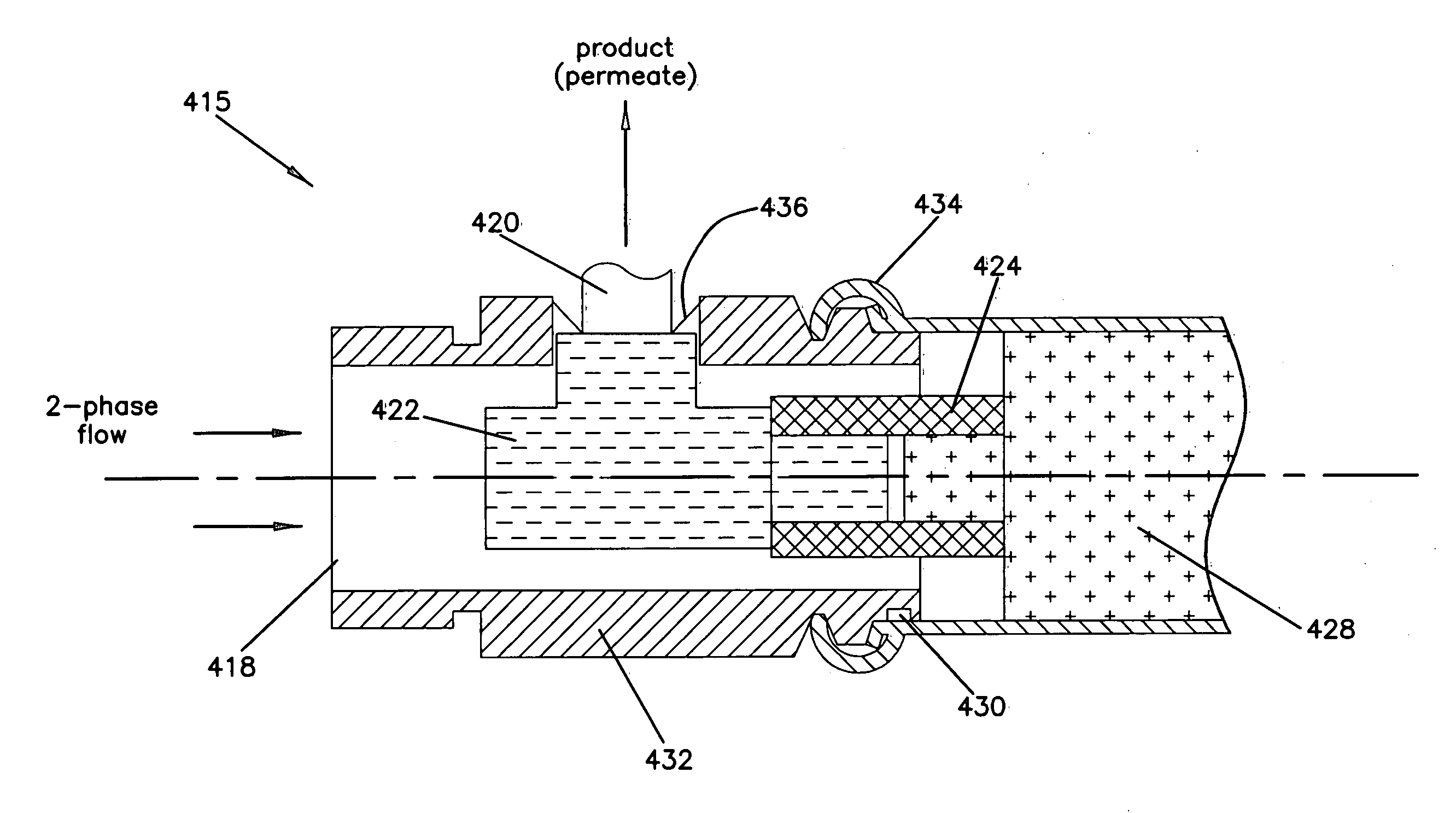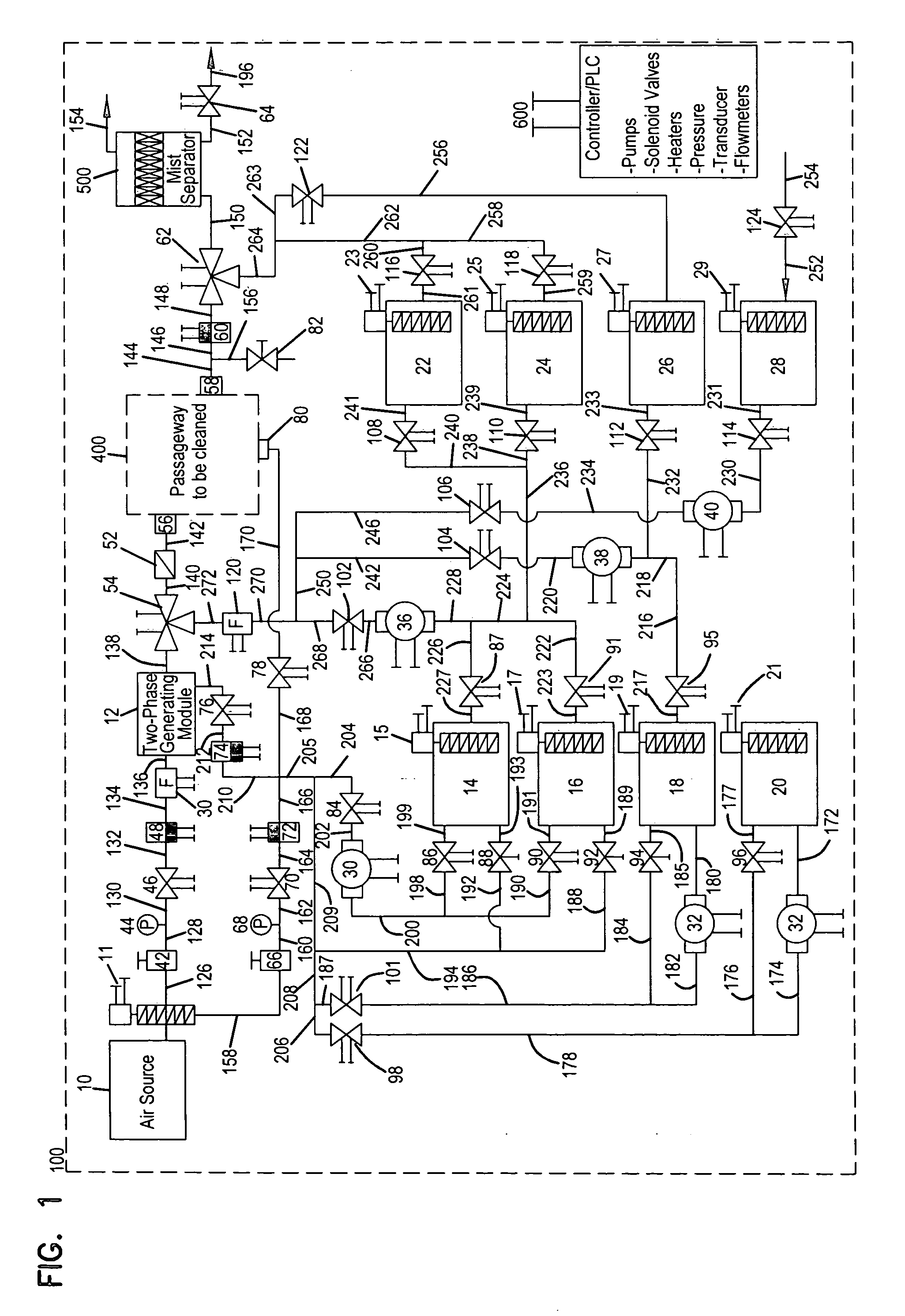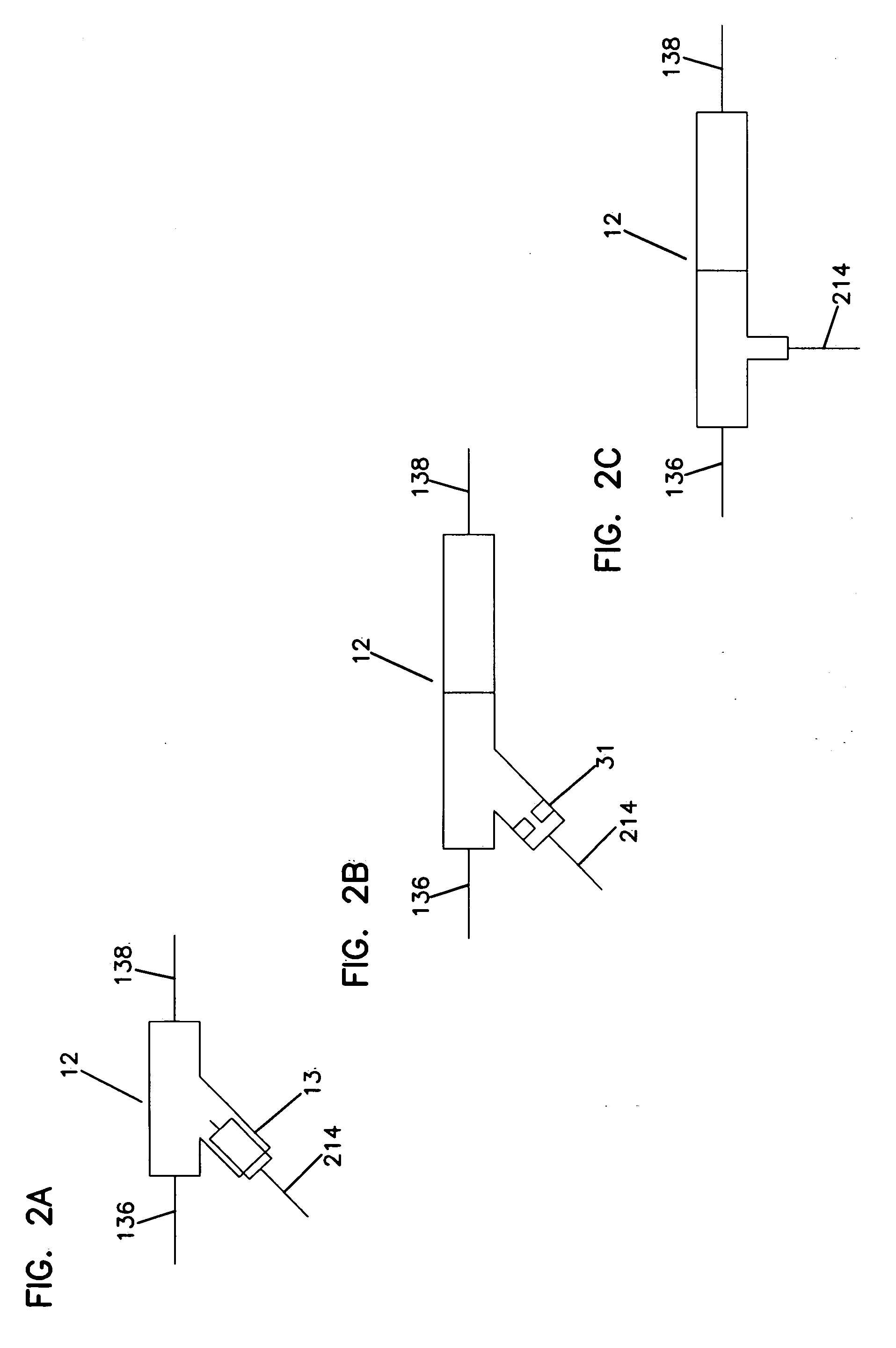Apparatus and method for cleaning pipelines, tubing and membranes using two-phase flow
a technology of pipelines and apparatus, applied in the direction of instruments, applications, cleaning using liquids, etc., can solve problems such as biofilm fragmentation
- Summary
- Abstract
- Description
- Claims
- Application Information
AI Technical Summary
Problems solved by technology
Method used
Image
Examples
example 1
[0094]This example describes apparatus and process for removing biofilm, contaminants and debris from passageways that carry pure water or bicarbonate dialysate solution as used in dialysis center water systems, pharmaceutical plants or industrial operations that require the use of pure water distribution systems. To simulate the above water distribution systems, we constructed a water system that allowed us to grow biofilm on the lumen surface of long tubing having a range of internal diameters by circulating water or other liquids suitable for biofilm growth. In this example, the passageway to be cleaned was constructed from PVC tubing and pipes having internal diameters from 0.25 inch to 1 inch, and having lengths from 100 to 300 feet. This arrangement provides pipelines and tubing with a length to diameter (L / D) ratio between 1,000 and 15,000. The tubing and pipe used to construct this arrangement were made from clear PVC to allow us to observe the two-phase flow at any section ...
example 2
[0105]This example describes the process for removing biofilm and residues from tubing that carry carbonated water or beverages such as those used in soda fountain and beverage dispensing machines.
[0106]A flow of water was maintained through a ⅜ inch internal diameter plastic tubing having a length of 50 feet (L / D=1600) for three months to simulate soda fountain conditions in the field. A thick biofilm formed on the tubing during this period of time.
[0107]The tubing was cleaned using the apparatus of FIG. 1 and an alkaline cleaning agent including 0.1% of Tergitol-1X surfactant having a pH of 11.5 for five minutes. The liquid to gas ratio was 1:1800 and the pressure was 45 psig. Air velocities at the inlet and the outlet of the tube were 50 ft / sec and 250 ft / sec, respectively.
[0108]Complete removal of the biofilm from the entire length of the tubing was obtained, as measured by standard microbiology methods. Thus the shear stress of the two-phase flow was high enough to overcome the...
example 3
[0111]This example illustrates the use of apparatus 100 and the two-phase process to remove biofilm and residue from small tubing having an internal diameter between 1.2 to 2 mm and lengths up to 5 meters, with a range of L / D from 2500 to 4000. In this case, the object to be cleaned includes a network of lines as depicted in FIG. 4. This network of lines is referred to as a distribution network in this example and illustrates the use of apparatus 100 in cleaning a network of lines where there is branching and more than one line in the distribution network.
[0112]Referring to FIG. 4, the distribution network has a common inlet line 402, a 3-way valve 404 when the line 402 divides into two lines 406 and 408. Line 408 has a 3-way valve 410, which then splits into two lines 412 and 414. This network of lines became contaminated with biofilm and residues due to the flow of water or like liquids. This kind of arrangement is common in industrial applications such as food and beverage proces...
PUM
| Property | Measurement | Unit |
|---|---|---|
| size | aaaaa | aaaaa |
| velocity | aaaaa | aaaaa |
| size | aaaaa | aaaaa |
Abstract
Description
Claims
Application Information
 Login to View More
Login to View More - R&D
- Intellectual Property
- Life Sciences
- Materials
- Tech Scout
- Unparalleled Data Quality
- Higher Quality Content
- 60% Fewer Hallucinations
Browse by: Latest US Patents, China's latest patents, Technical Efficacy Thesaurus, Application Domain, Technology Topic, Popular Technical Reports.
© 2025 PatSnap. All rights reserved.Legal|Privacy policy|Modern Slavery Act Transparency Statement|Sitemap|About US| Contact US: help@patsnap.com



